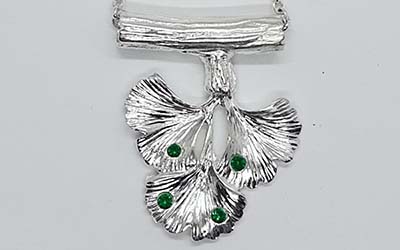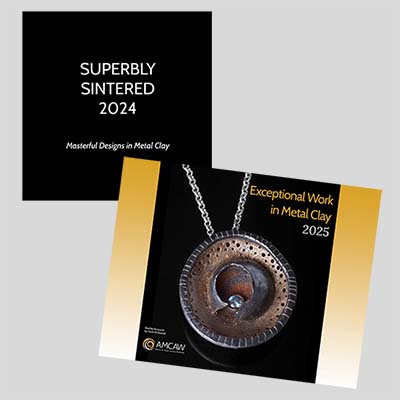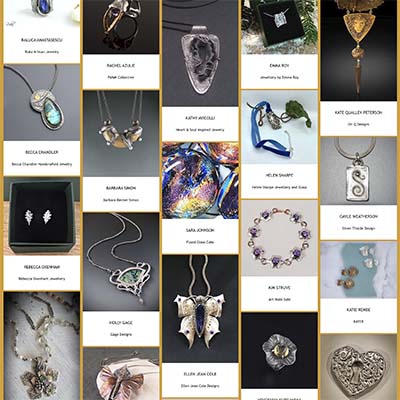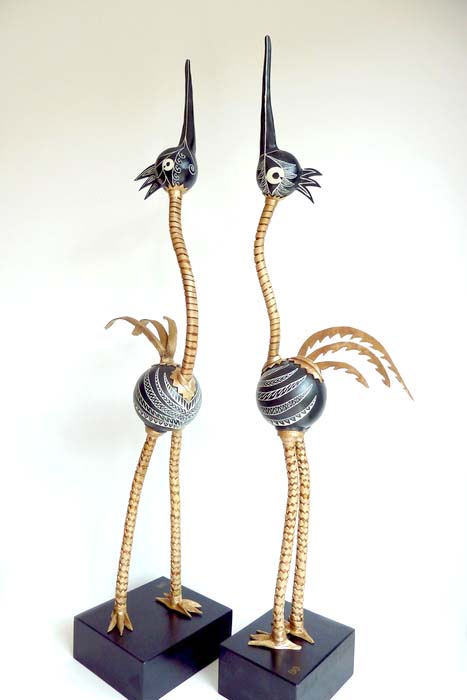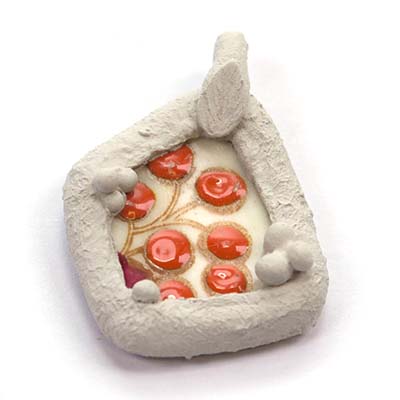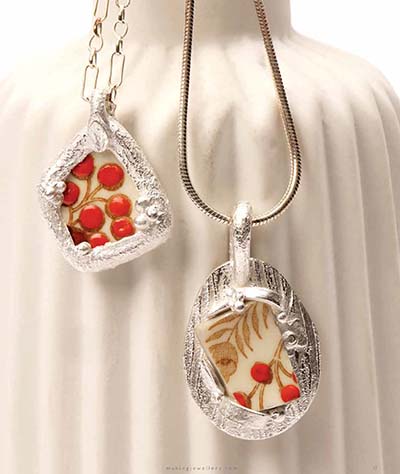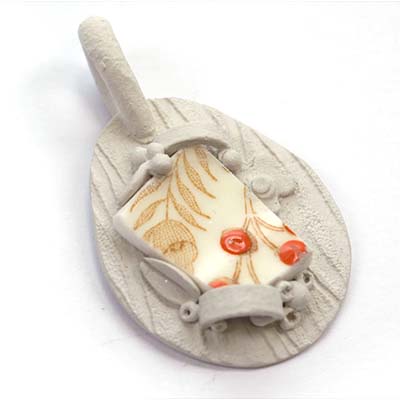Adding a silver design by using Overlay Paste
Art Clay Silver 650 Overlay Paste consists of pure silver particles, a special binding agent, and water. The binding agent is produced from harmless pulp fiber. During firing, the pure silver particles solidify. The binding agent consists of carbon, hydrogen, and oxygen resulting in the release of harmless carbon dioxide and steam during firing. The special formula of this product allows for combination with glass, porcelain, and ceramic materials, and is also suitable for firing with sterling silver findings and wire (SV925 and higher quality recommended).
This product is water-based and can dry up. Always keep the container tightly capped. If it becomes too thick, add a little water and stir well. The clay may crack during firing if it is not completely dry.
As some silver settling may occur at the bottom of the jar, stir the paste well with a metal spatula before use. To dilute the paste, take out the necessary amount and place it in a separate container.
Overlay paste can be used to paint designs or embellishments onto your ceramic piece, either free hand or using a stencil. You can also create sgraffito designs where you paint on a thin layer of Overlay Paste, leave it to dry, and then scratch designs into the unfired paste so the ceramic shows through.
Overlay paste can also be used to create silver beads using a ceramic bead as a base. It is possible to buy unglazed greenware beads and pendants on which you can paint several layers of silver overlay paste and then fire. It is important to make sure the ceramic is clean, and the layers are well applied to avoid air pockets.


